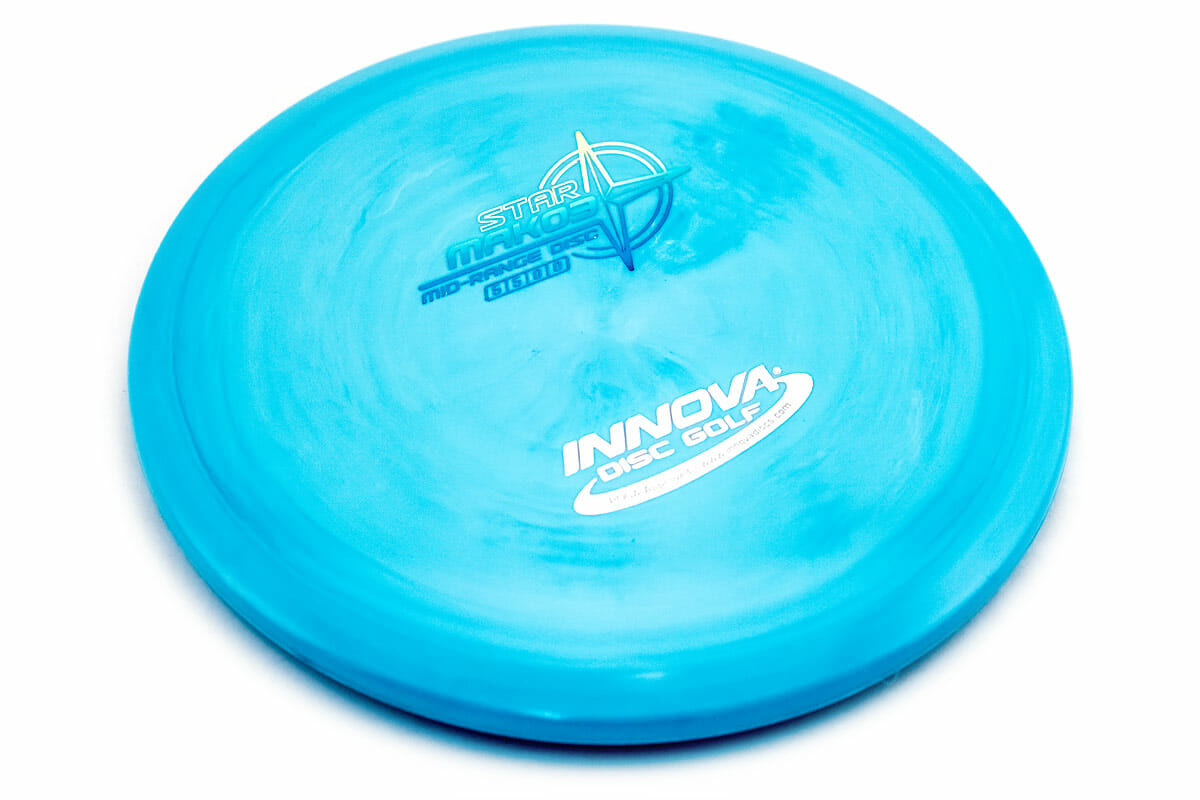Get started with the right discs.
May 18, 2020 by James Bress in Opinion with 0 comments

This is part four in our series on learning to play disc golf as an ultimate player. The series is presented by Innova Discs, the Choice of Champions!
Winter was upon us and we had lost daylight savings, so weekday golf was at an end. We were still hitting Ecker Hill on the weekends, but we’d shifted back to a gym schedule that left an hour or so to watch disc golf videos back at Brent’s house. It was through these videos that I started to pay attention to which discs the pros were throwing, and when, and why. I decided it was time to invest in some fresh plastic.
I went to Dick’s Sporting Goods (unaware at this point of the burgeoning independent disc stores in my area) and studied the Innova Flight Ratings poster hanging over their selection. “Speed” made intuitive sense to me: the sharper the edge, the more aerodynamic the disc, the faster it would fly. “Glide” seemed more appropriate for describing the flight of an Ultrastar than any of the discs I had been throwing, but I accepted it at face value. The final two categories seemed most important to me given my present limitations.
When you throw a right-handed backhand (RHBH), the left side of the disc moves faster through space than the right side due to the clockwise rotation. With enough power behind it, this creates lift and will raise the left side of the disc, steering it to the right (or, at least, this is how it was once explained to me). That is what “Turn,” the third number, refers to. I had not yet thrown a golf disc with enough combination of power and flat release to truly see a disc turn. Quite the opposite, in fact; I had only seen them “fade” to the left at the end of their natural flight paths. Fade is the fourth number. It seemed to me that my ideal disc would be the one that flew straight and landed flat, much like the Ultrastar. I set about looking for discs with the minimum amount of turn and fade, and there it was: 5, 5, 0, 0. The Star Mako3.
I purchased it immediately, along with a few others with low turn and fade numbers: a red/yellow tie-dye Champion TL (7, 4, 0, 1) and a yellow Star Aviar (2, 3, 0, 1). I did not yet know what “Star” or “Champion” referred to, but they were slightly more expensive than some of the others and, being a man of expensive tastes, I figured I’d invest in the “good” ones on faith that the old adage “buy cheap, pay twice” was as true of golf discs as it is of underwear and floss.
I had guessed right. These three discs, the Mako3 in particular, were perfect for my skill set. The Star plastic was also a good choice as the primary difference between Star and the cheaper option (DX plastic) is enhanced durability, and I was about to spend the next few months just absolutely blasting these discs into trees.
My fourth Tuesday Tip for ultimate players picking up disc golf is a specific one: Invest in an Aviar, a Mako3, and a TL, all in premium (Champion or Star) plastic. If you go on r/discgolf, there is no shortage of threads asking which discs are the best for beginners. Comments hang from these threads suggesting dozens of discs across different brands, undoubtedly overwhelming the poor beginner who posed the question. The thing is, they’re all probably right; there is a massive overlap in the discs offered by different brands.
I am writing this very specifically from my own experience, and my word is far from gospel, but it has worked for me. I chose Innova because it was what was readily available when I went looking. Today, I throw a bag composed entirely of Innova discs, sponsorship free, because I think they are the best; brand allegiance is a helluva drug. If you think Westside Discs has the coolest aesthetic (they do), search for a local disc shop and pick them up or order some from an online retailer. If you like Paige Pierce and want to bomb Discraft like she does, you can easily find those too. I’m not here to push one brand over another. Consult the Marshall Street Flight Guide to find comparable molds across brands, and this Plastics Matrix to find comparable plastics. But if you want my advice, I say buy those three.
There are a number of minute differences in the flight properties of each type of plastic, but these are best learned through experimentation. The reason I explicitly suggest the “expensive” investment (and really, for the three discs I’m recommending, the difference in price between the least and most costly totals between 12-21 dollars, depending on the vendor) is because price equals durability, which equals consistency. When a disc gets beat up through use, its flight characteristics will change. Primarily, it will “turn” more easily. It took a long time before my Champion TL’s flight characteristics began to change, despite the beating the poor thing took as I learned how to drive.
The takeaway: Only with a consistent disc can you develop consistency in your swing.